When the ministers re-enter the sanctuary, the choir begins the Kyrie. This Mass has no Introit. The ministers say the Prayers at the Foot of the Altar, beginning with Psalm 42 and the Gloria Patri for the first time in two weeks. The altar and celebrant are incensed in the usual order.
*Photography Note: If there was one moment of the Easter Vigil Mass that felt like the moment of the Resurrection, it was the return of the Gloria. I shot this portion of the Mass from the choir loft. Once the Kyrie ended, the church was stone still and absolutely silent except for the clinking of the thurible against its chain as the deacon incensed the celebrant. The congregation knew what was coming next - they'd been waiting for it since the start of these three long days - and the anticipation was palpable. The air was vibrating and it felt as if the building itself and everyone in it was holding their breath. It was an amazing thing to experience.
The celebrant intones, "GLORIA IN EXCELSIS DEO..."
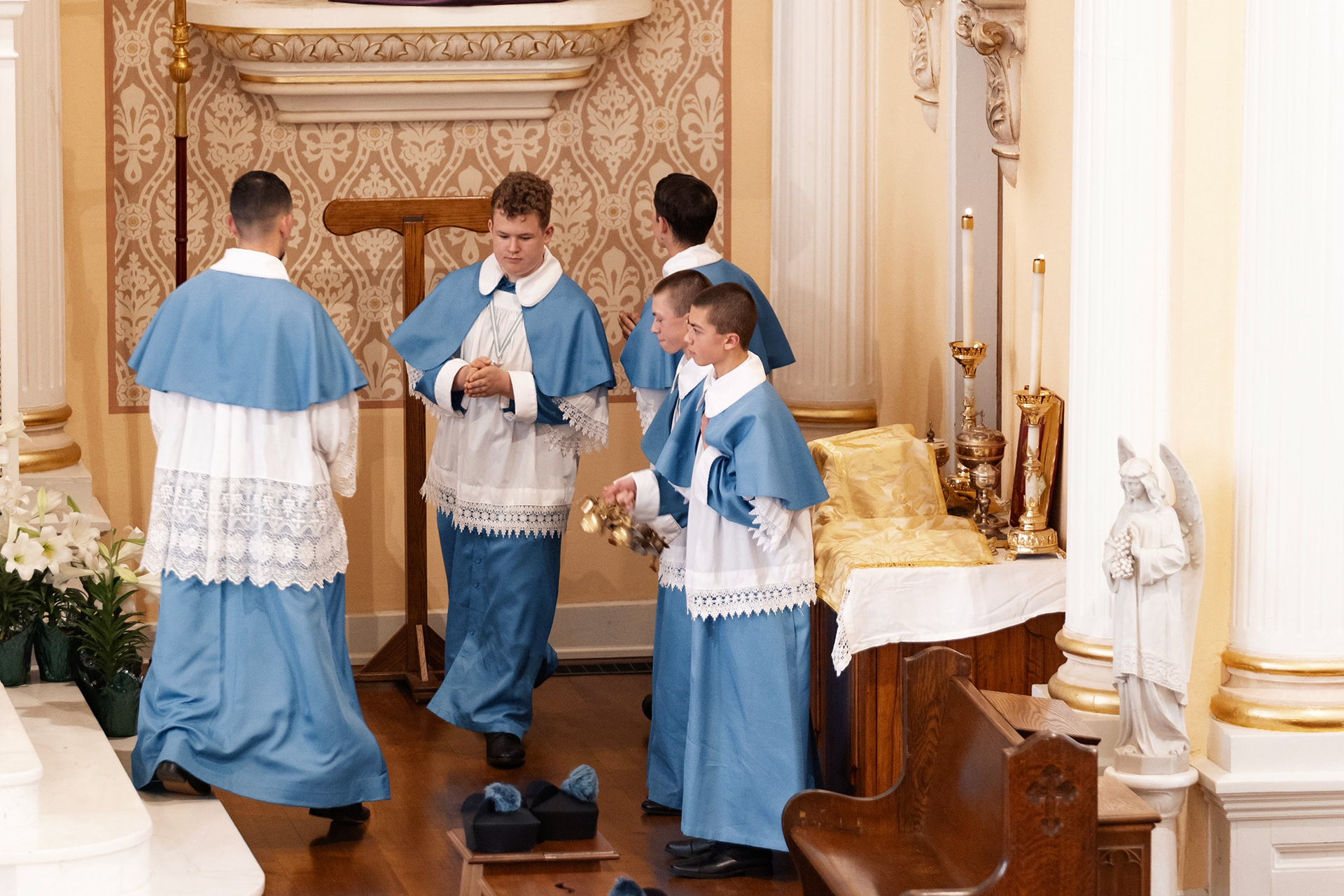
The organ roars to life and the sanctuary becomes a flurry of activity as the servers ring bells, turn on lights, and pull away the violet cloths that have veiled the statues for the past two weeks.
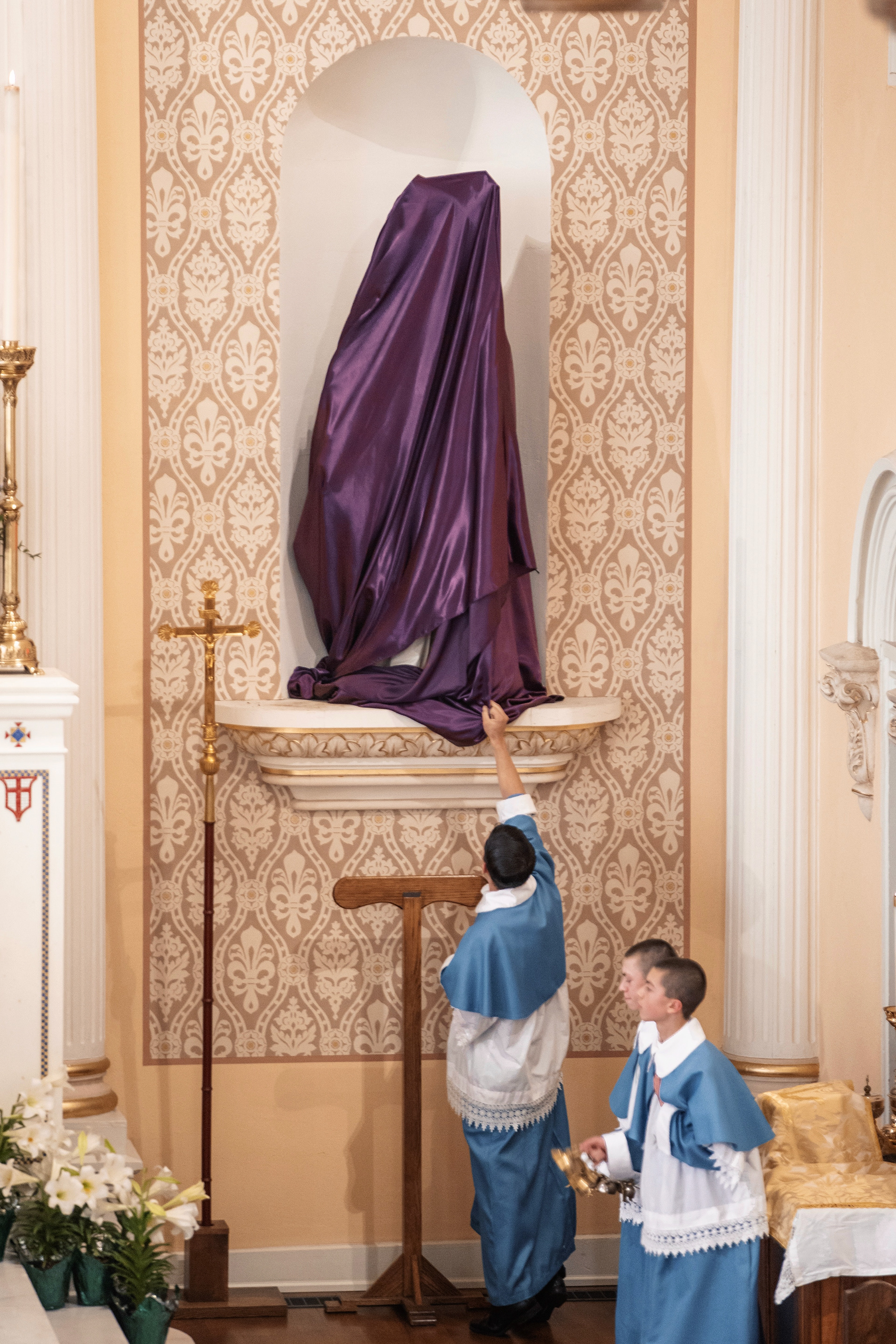
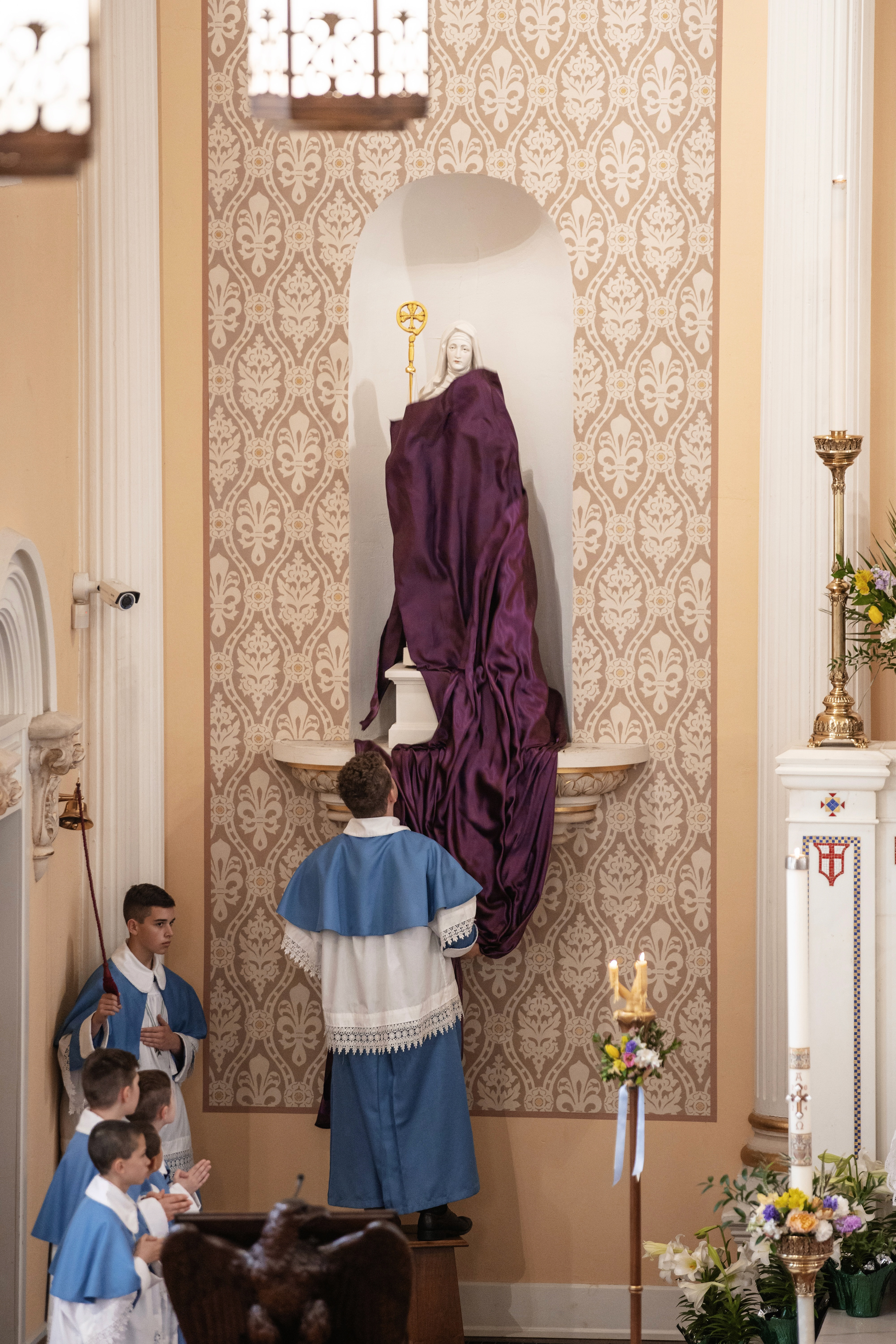
The images in the church are uncovered as we follow Jesus through His Passion. After He dies on Calvary on Good Friday, the Crucifixes are unveiled. After He has harrowed hell, risen, and "opened the Kingdom of Heaven to all believers," we uncover the statues of some of those believers who are in Heaven with Him.
He is risen, and almost all is restored.
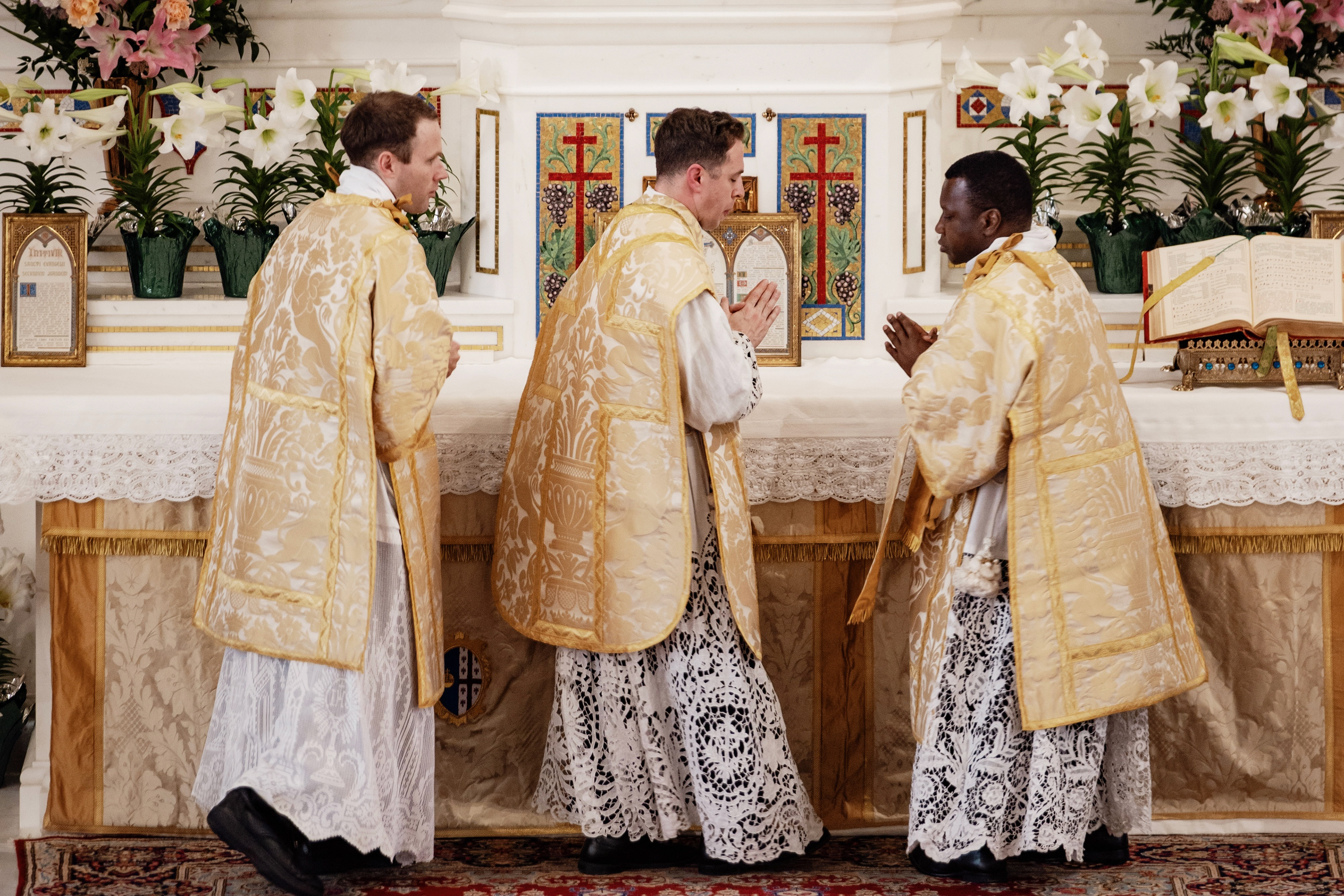
But there are still a few details that tell us it is not yet Easter Sunday.
The deacon and subdeacon genuflect at the center of the altar as usual, but the celebrant will only bow until after Communion when the Blessed Sacrament is finally placed back in the tabernacle.
After the Epistle, the triumphant return of the Alleluia, and the final Tract before Easter Sunday, the deacon takes the book of Gospels in procession with incense but without candles.
On a practical level, the great light from the Paschal candle would historically eliminate the need for additional candles. The absence of candles also represents that the Resurrection of the Lord is not public yet; the light of faith in the Resurrection does not yet illumine the souls of the Apostles and faithful women.
On a practical level, the great light from the Paschal candle would historically eliminate the need for additional candles. The absence of candles also represents that the Resurrection of the Lord is not public yet; the light of faith in the Resurrection does not yet illumine the souls of the Apostles and faithful women.

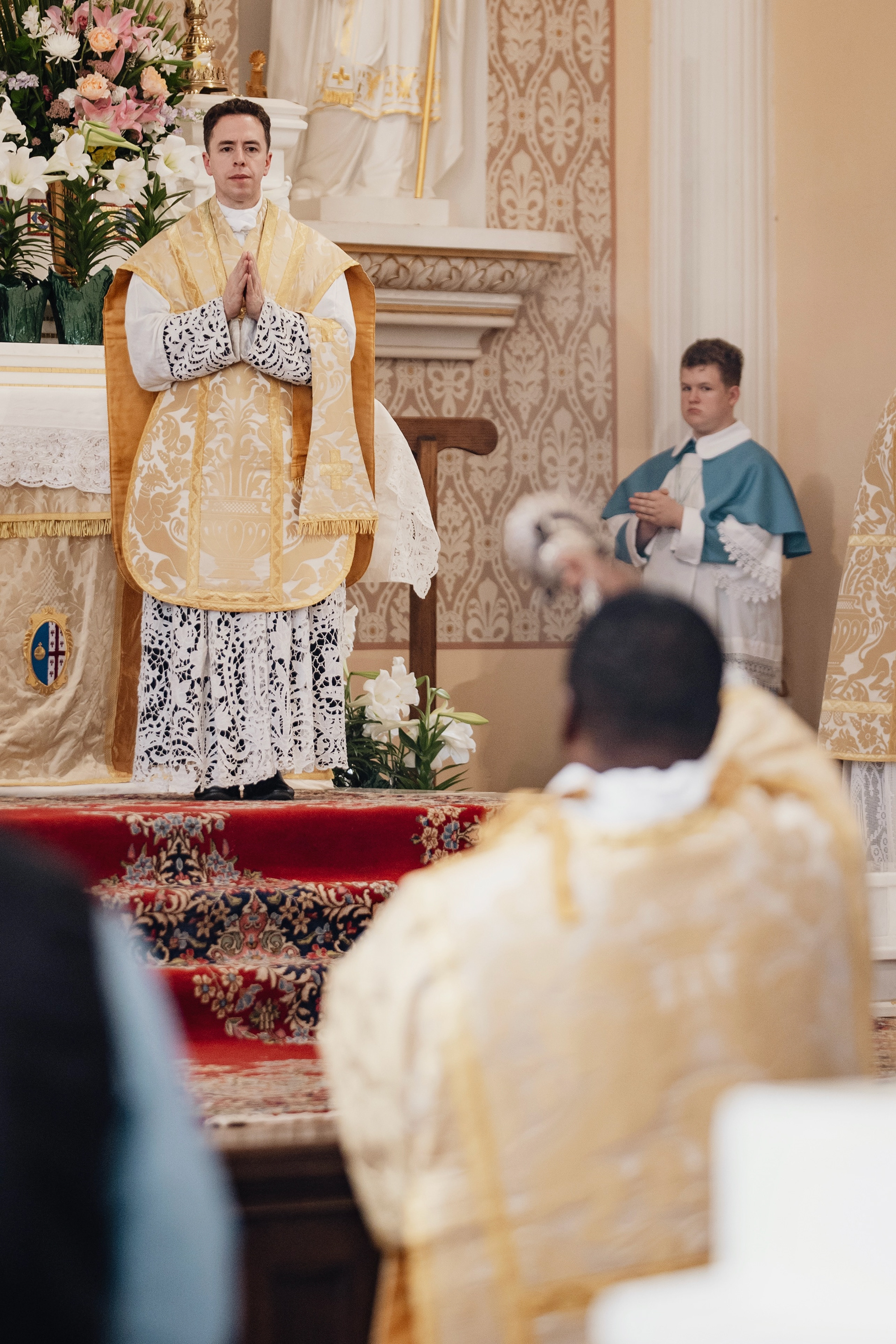
Today the incense represents the perfumes that the women brought to the tomb, and the lack of candles represents their absent faith. Nevertheless, the women were the first to announce the Resurrection. Woman was the first to weep after the Fall, and it is fitting that she be the first to rejoice after the Redemption.
The torches are lit with a flame from the Paschal candle.
There is no homily or Creed today; the absence of the Creed represents that the followers of Jesus still did not believe in His divinity and were hidden in fear.
There is no Offertory verse, as the women had gone in silence to offer spices and anoint the Body of Jesus, but were unable to because He was no longer in the tomb.
There is no Offertory verse, as the women had gone in silence to offer spices and anoint the Body of Jesus, but were unable to because He was no longer in the tomb.
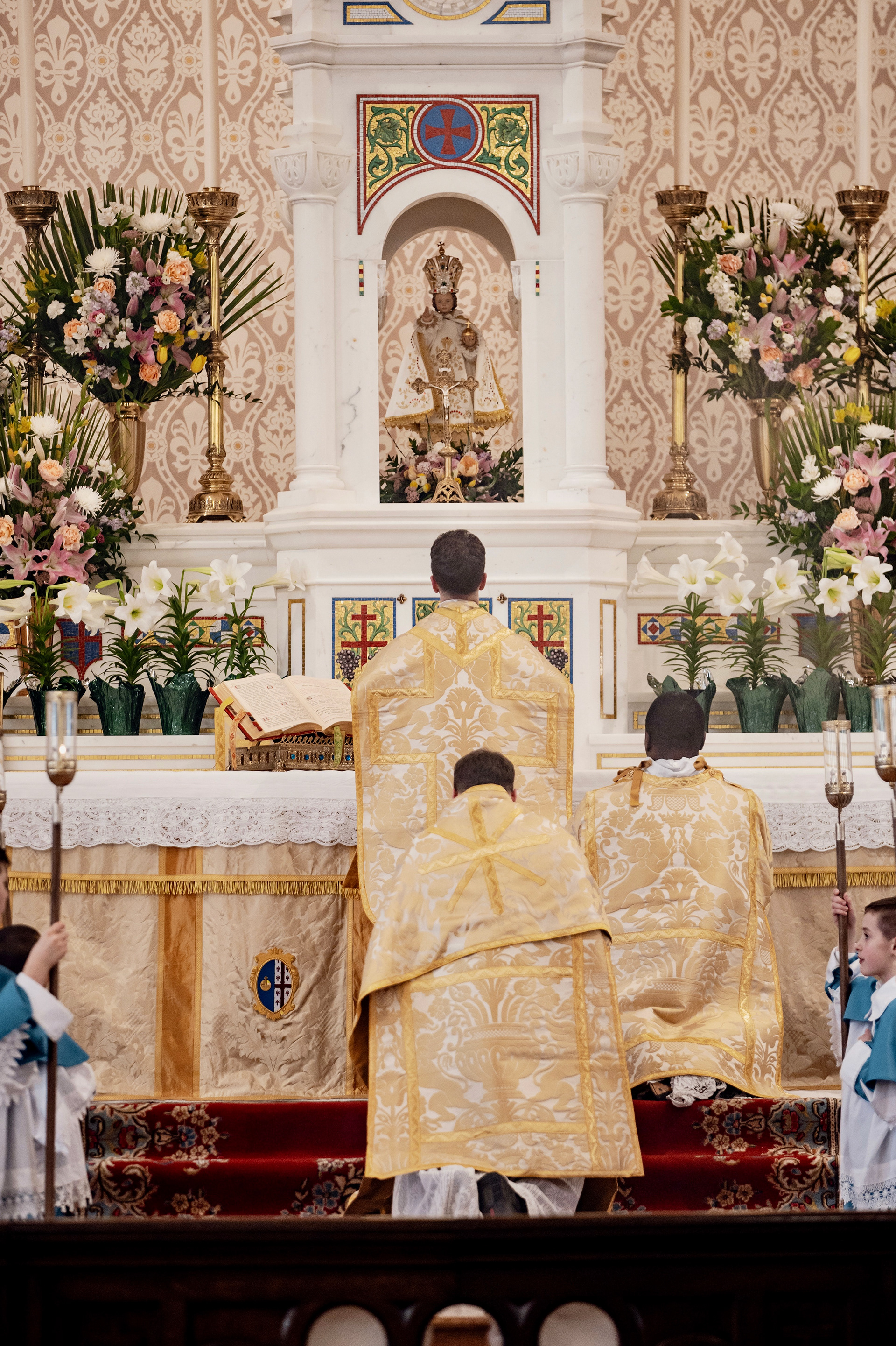
Et elevátis óculos in caelum ad te Deum Patrem suum omnipótentem...
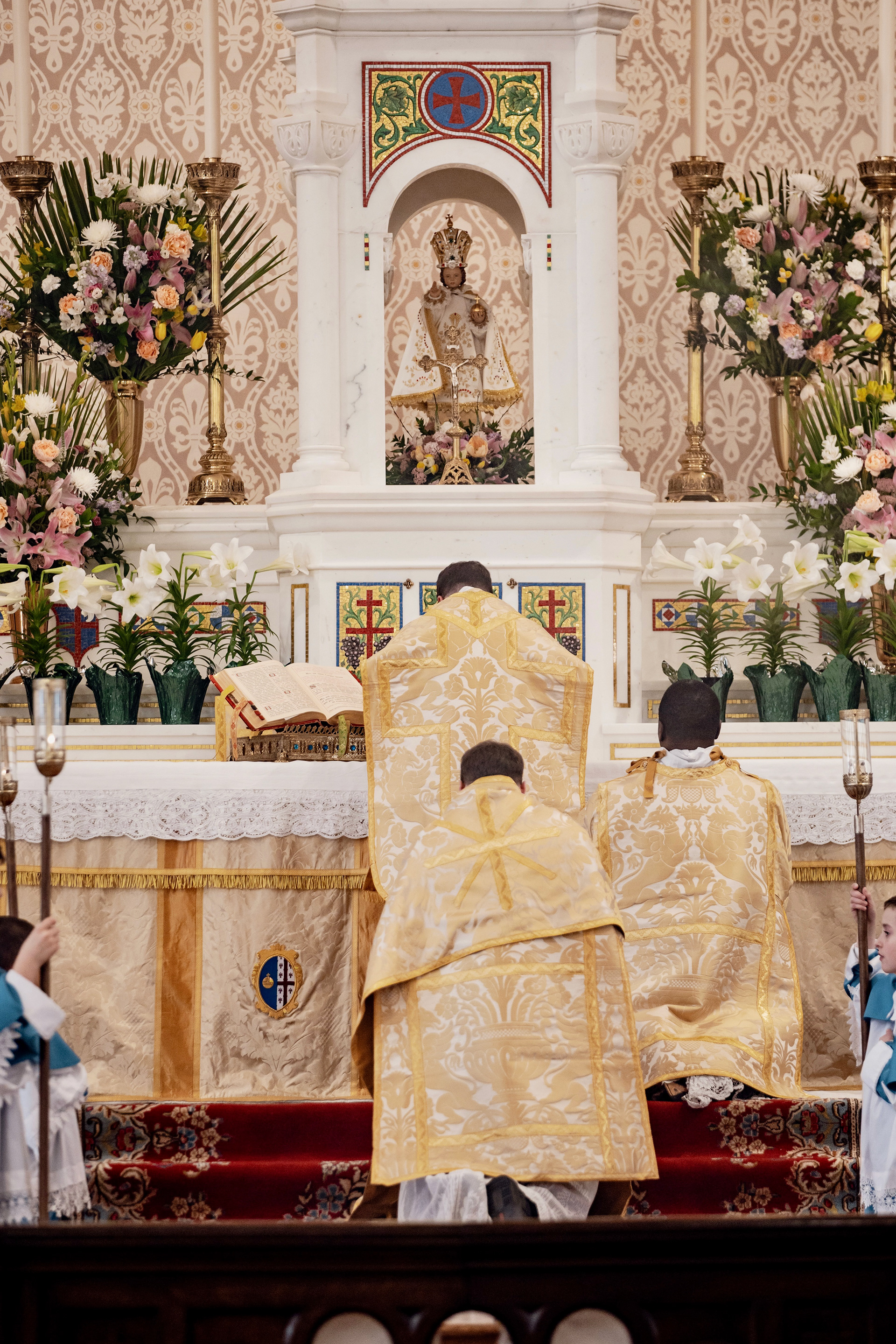
tibi grátias ágens...
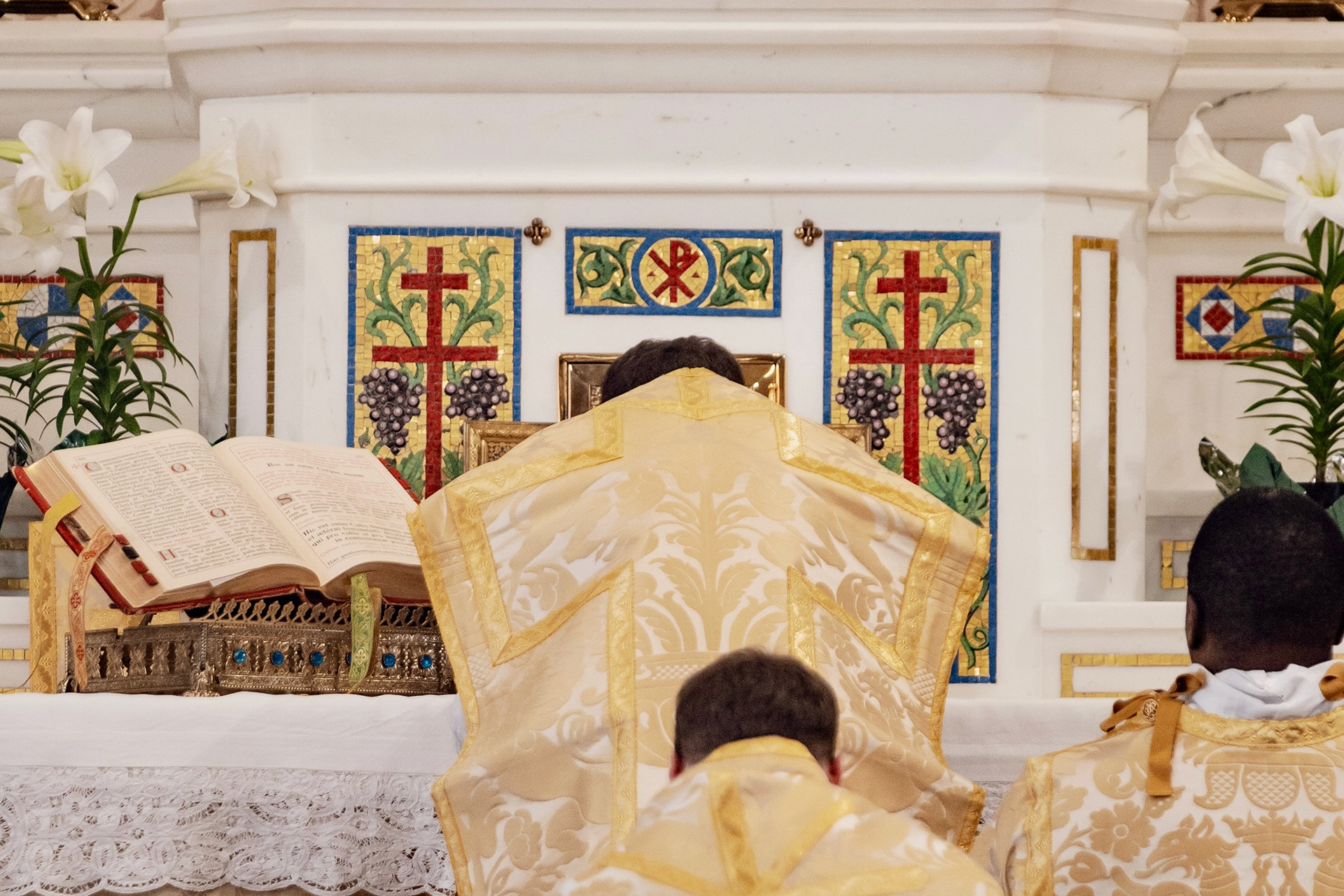
HOC EST ENIM CORPUS MEUM.
THIS IS MY BODY.
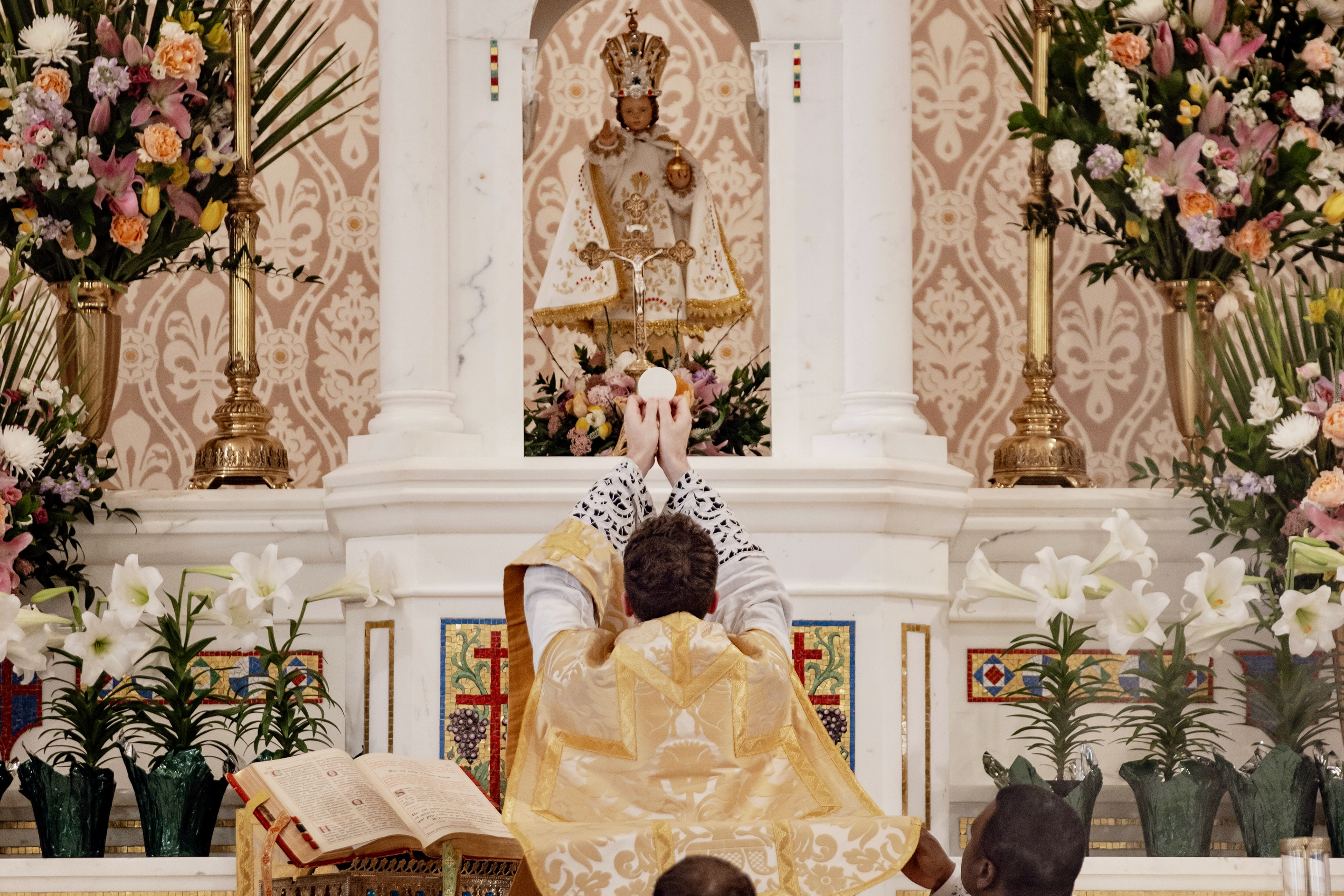
HIC EST ENIM CALIX SÁNGUINIS MEI...
THIS IS THE CHALICE OF MY BLOOD...
At this Mass, the Peace is not given and the Agnus Dei is omitted. Our Lord did not visit His disciples and bid them, "Peace be with you" until the evening of Easter Day. The Church, always seeking to imitate of the actions of her Beloved Spouse, does not sing the Agnus Dei as it includes the words, "Grant us peace" on the final iteration.


The absolution is given.
Ecce Agnus Dei...
(Behold the Lamb of God...)
(Behold the Lamb of God...)
...qui tollit peccáta mundi.
(...Who takes away the sins of the world.)
(...Who takes away the sins of the world.)
The ministers escort Our Lord to those who are about to receive Him for the first time.
"Corpus Domini nostri Jesu Christi..."
(May the Body of Our Lord Jesus Christ...)
(May the Body of Our Lord Jesus Christ...)
"...custódiat ánimam tuam..."
(...preserve thy soul...)
(...preserve thy soul...)
"...in vitam aetérnam. Amen."
(...unto everlasting life. Amen.)
(...unto everlasting life. Amen.)
The brief Easter Vespers are sung in place of a Communion antiphon. It consists only of an antiphon of Alleluias, Psalm 117 (DR 116), and the Magnificat.
The Blessed Sacrament is placed back in the tabernacle.
The "Ite, missa est" returns after nine long weeks and is followed by a double Alleluia. The Last Gospel (John 1:1-14) is read as usual.
The "Ite, missa est" returns after nine long weeks and is followed by a double Alleluia. The Last Gospel (John 1:1-14) is read as usual.
*Liturgy Note: The last Alleluia before Septuagesimatide (the three week "pre-Lent" period) follows the Benedicamus Domino at the conclusion of Vespers the Saturday before Septuagesima Sunday. The Alleluia is buried the following day (literally buried, in some places) and is not heard again until the Easter Vigil, regardless of what solemnities may happen during Lent. This Benedicamus Domino also ends with a double Alleluia and is sung to the same tone as the "Ite, missa est" of the Easter Vigil and its double Alleluia, perfectly bookending the beginning and end of the Lenten season.
"[The women] went out quickly from the sepulchre with fear and great joy, running to tell his disciples."
Mark 28:8
Mark 28:8
"Resurexit sicut dixit: Alleluia!"
(He is risen as He said: Alleluia!)
(He is risen as He said: Alleluia!)